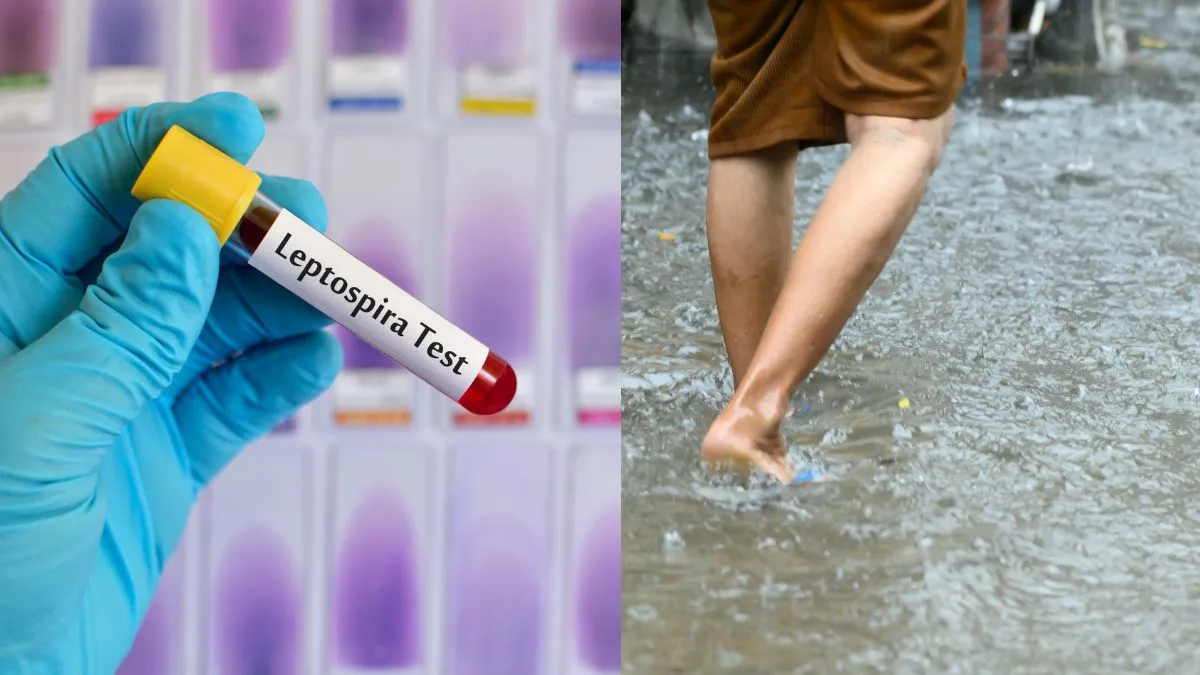- By Bornika Das
- Wed, 27 Aug 2025 08:27 PM (IST)
- Source:JND
When the monsoon comes, it provides relief from the blistering heat, but along with it, an upsurge in water-borne diseases. And among them, leptospirosis remains one of the most neglected and most treacherous of diseases. Transmitted by Leptospira bacteria, this zoonotic disease is caused by coming in contact with water or soil that has contaminated urine from animals carrying this infection, particularly rodents. Walking through floodwaters, barefoot walking on damp ground, or even touching animals has the unwitting potential of exposing individuals to the disease, thereby presenting it as an invisible danger during rainy weather.
The reason leptospirosis is most frightening is that its symptoms, fever, headache, muscle aches, vomiting, or reddened eyes, tend to mimic more prevalent diseases such as dengue, malaria, or viral hepatitis. This common misdiagnosis may delay appropriate therapy, with a high risk of serious complications like kidney failure, liver impairment, or death. In conversation with The Daily Jagran, Dr Rupali Patnaik, Consultant-Critical Care Medicine, Manipal Hospital Bhubaneswar, shares causes, treatment and prevention of Leptospirosis.
What Is Leptospirosis?
Leptospirosis is a bacterial infection caused by Leptospira species. It is a zoonotic disease that spreads from animals to humans through contact with water or soil contaminated by the urine of infected animals, especially rodents. It is transmitted through various ways, such as wading in floodwaters, contact with contaminated soil or water, through broken skin or mucous membranes, and occupational exposure (farmers, sewage workers, etc.)
Symptoms And Complications Of Leptospirosis
Common symptoms associated with the disease are high fever with headache and muscle pain (myalgia), red eyes (conjunctival suffusion), vomiting and diarrhea, liver involvement leading to jaundice, kidney damage, and brain involvement. Dr Rupali Patnaik states, “A severe form of the disease is called Weil’s disease, where both the liver and kidneys are damaged. Exposure to floods or contaminated water, agricultural workers, animal handlers, and people of overcrowded and unhygienic areas are vulnerable populations for this dreaded disease.”

Leptospirosis Causes (Image Credits: Canva)
Diagnosis And Treatment Of Leptospirosis
Leptospirosis is diagnosed by specific blood tests. These are ELISA test and, microscopic agglutination test (MAT). In later stages, urine and cerebrospinal fluid (CSF) are helpful. Mild cases are treated with oral antibiotics like doxycycline or amoxicillin. Dr Rupali Patnaik mentions, “In severe cases, intravenous antibiotic therapy with IV penicillin, ceftriaxone, or doxycycline is needed. In critically ill patients with organ involvement, appropriate therapies along with organ support are needed.”
Prevention And Public Health Importance
This life-threatening disease can be prevented by avoiding contact with stagnant or flood water, especially in the rainy season, using protective clothing and shoes, rodent control measures, and prophylactic doxycycline in high-risk exposure cases.
ALSO READ: Gastric Problems During Monsoon: Expert Advises To Adhere To These Essential Tips
Dr Rupali Patnaik says, “Leptospirosis often goes underdiagnosed due to its nonspecific symptoms that mimic other febrile illnesses like dengue, malaria, or viral hepatitis, especially in tropical and subtropical regions.” Public health action and early medical treatment are essential to preventing complications and minimising death.
Community And Policy Action
Educational efforts during the monsoon season, community-level awareness through schools and health workers, and regular disease surveillance are vital. The One Health approach—integrating animal and human health services—is essential for controlling the disease at its source.
